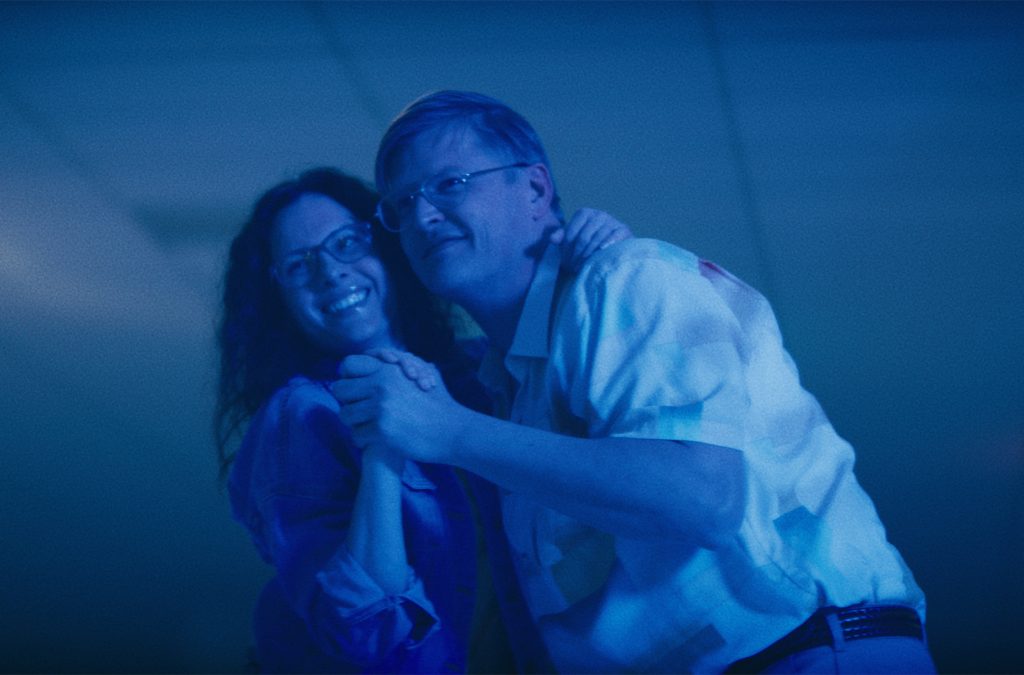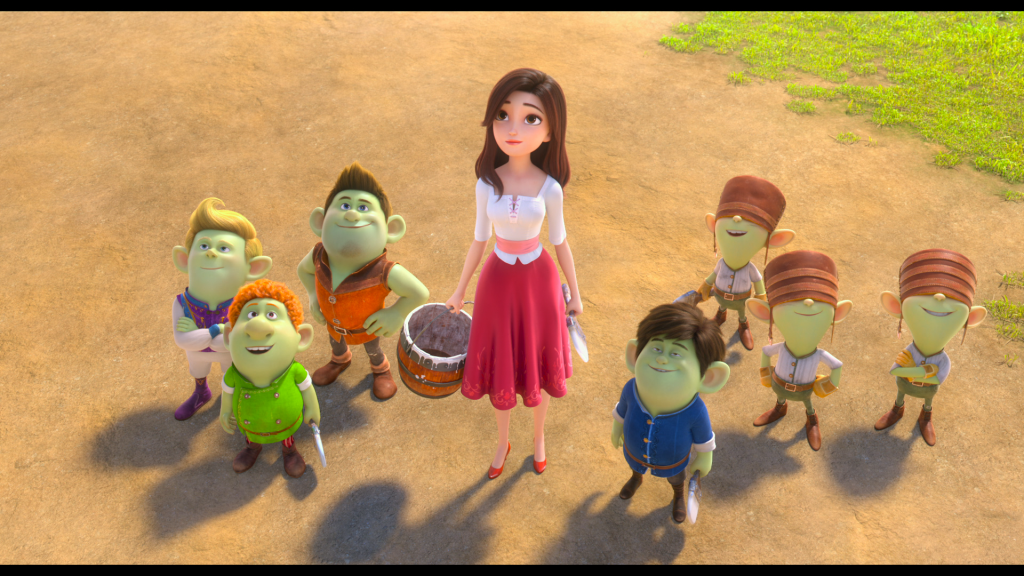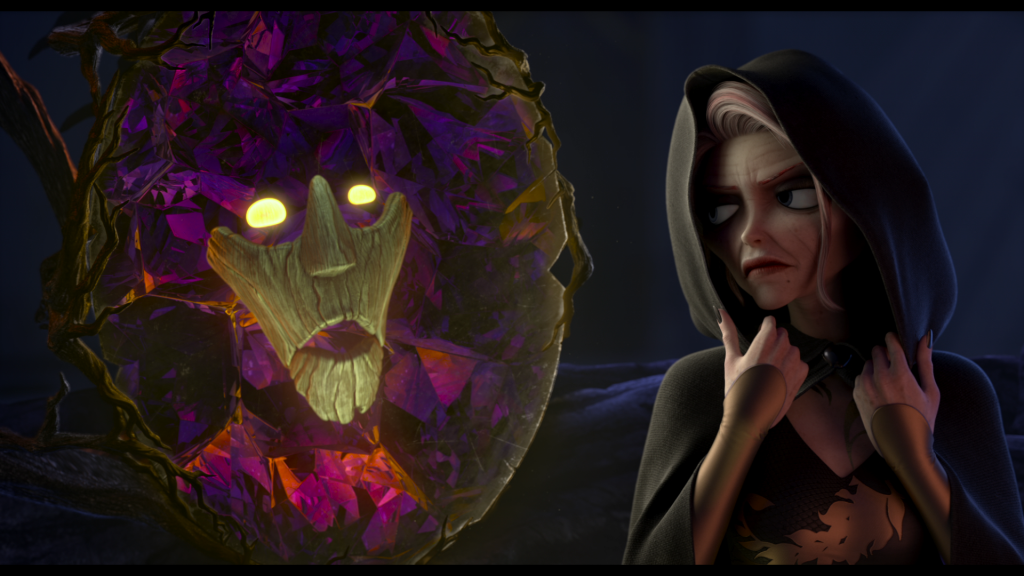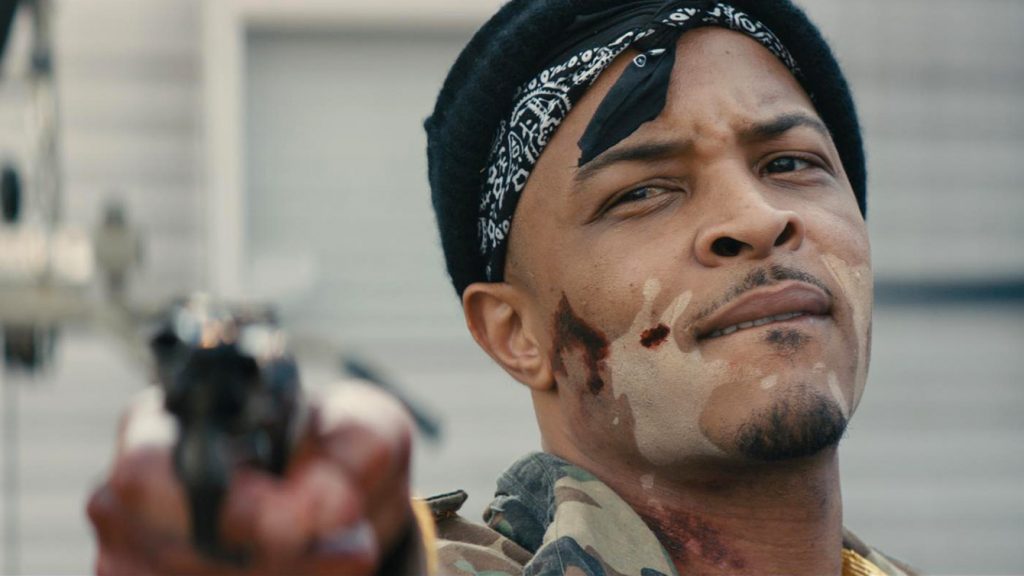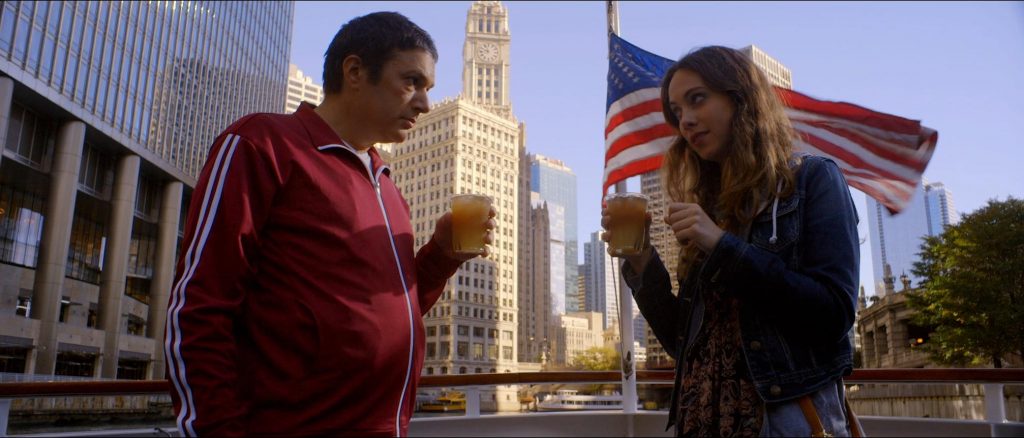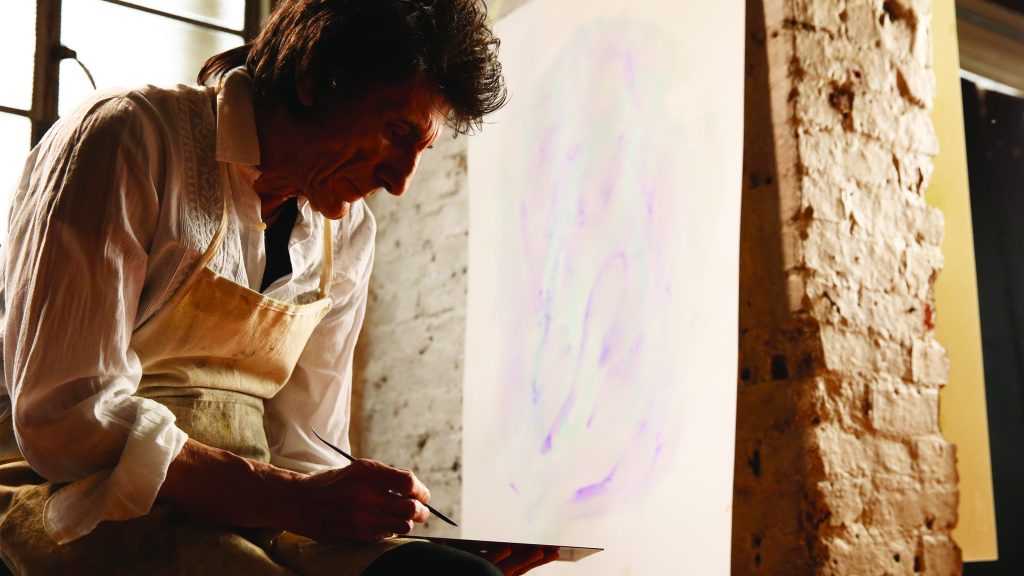September 25, 2020
by Carla Hay

“Ottolenghi and the Cakes of Versailles”
Directed by Laura Gabbert
Culture Representation: Taking place primarily in New York City and briefly in London and Versailles, France, this documentary about celebrity chef/author Yotam Ottolenghi’s Metropolitan Museum of Art event to celebrate the cakes of Versailles features a cast of white and Asian people representing the upper-class and middle-class.
Culture Clash: The challenge for this event was to bring a modern twist to classic pastry dishes, and there were a few conflicts with the museum staff over what the chefs should and should not do.
Culture Audience: “Ottolenghi and the Cakes of Versailles” will appeal primarily to high-end foodies and fans of these chefs.

In June 2018, celebrity chef/author Yotam Ottolenghi (who owns and operates Ottolenghi Test Kitchen, a cooking hub/office in London) presented a celebration of the pastries of the legendry French court of Versailles in an event that took place at the Metropolitan Museum of Art (also known as the Met) in New York City. The exhibit event, titled “Feast of Versailles with Yotam Ottolenghi,” included the work of several notable chefs who were personally invited by Ottolenghi to participate. The straightforward documentary “Ottolenghi and the Cakes of Versailles” (directed by Laura Gabbert) chronicles the behind-the-scenes story about this event.
The movie begins with Ottolenghi in London (where he lives) talking about why he decided to head up this event: “I was looking for the next challenge.” He says the Metropolitan Museum of Art approached him for the job. Ottolenghi remembers thinking, “Why am I getting an email from the Met? I don’t hang out with the Met [crowd].”
Ottolenghi continues, “When I saw that Versailles was the upcoming exhibit at the Met, I was intrigued. Food and art and history meet at one big event at the Met about cakes inspired by Versailles.” Considering that Ottolenghi has a background as a pastry chef, he had this thought of the event: “This is for me.”
Met Live Arts Department general manager Limor Tomer explains the idea behind the Met’s “Feast of Versailles” exhibit: “We think of performance and performance work very broadly, so the art of the kitchen fits very well into that. When we were thinking about Versailles, we were thinking about, ‘How do we give people an embodied way to understand what Versailles was and how it fit socially and culturally into people’s lives?'”
To prepare for this prestigious undertaking and to get a better understanding of the culture of Versailles, Ottolenghi visited Versailles, including the landmark Palace of Versailles. He also worked with a tutor on Versailles history: Bard Graduate Center assistant professor Deborah Krohn, who mentions in the documentary that Versailles was different from most other royal courts because there was no real privacy.
The general public could come and go in the Versailles court, which made the royals and upper-class society feel more accessible to lower-class people, but it also created more social envy, since poor people could see all the luxury that other people enjoyed in the court. Ottolenghi comments toward the end of the documentary that the court of Versailles and Instagram have parallels, since both are open to the public, but people use these forums as ways to boast, show off and create envy.
Ottolenghi opens up about his own background in the documentary. He grew up in Jerusalem, and his parents were academics who expected him to follow a similar career path. After a stint in the Israeli Defense Forces, he graduated from Tel Aviv University in 1997, with a combined bachelor’s and master’s degree in comparative literature. He relocated to Amsterdam, where he edited the Hebrew section of NIW, a Dutch-Jewish weekly magazine.
Ottolenghi’s career path turned to cuisine when he moved to London to study French cooking at Le Cordon Bleu. He still has a passion for writing though, as evidenced by his cookbooks and his articles/essays in publications such as The Guardian and The New York Times. Ottolenghi, who is openly gay, lives with his husband Karl Allen and their two sons. Ottolenghi talks warmly about his family, but they are not featured in the documentary.
Ottolenghi’s international and well-traveled background has clearly given him an open-mindedness to other cultures. His business partner Sam Tamimi, who’s briefly interviewed in the documentary, mentions how they both were raised in Jerusalem, but in very different parts of the city: Ottolenghi grew up in Western Jerusalem (which is predominantly Jewish), while Tamimi grew up in Eastern Jerusalem, which is predominantly Muslim.
This openness to other cultures is why Ottolenghi consciously decided that he wanted to invite chefs from various countries to create pastry art for the Versailles exhibit. In the documentary, he says he started his search by following pastry chefs on Instagram. Ottolenghi says he was looking for “pastry chefs who take their art so seriously that the push the boundaries of technology, flavors, presentation. And it was really important to me that they actually be as dissimilar from each other as possible.”
The chosen pastry chefs were:
- Dominique Ansel, originally from France and currently living in New York City, this James Beard Award-winning baker is best known for creating the Cronut®, Cookie Shot, DKA (Dominique’s Kouign Amann) and Frozen S’mores.
- Sam Bompas and Harry Parr, originally from the United Kingdom, this London-based duo known as Bompas & Parr, are conceptual artists who infuse technology in their work and are known for creating extraordinary gelatin art.
- Dinara Kasko, originally from the Ukraine, has a background in architecture and makes pastries using 3D-modeling technologies.
- Ghaya Oliveira, originally from Tunisia and currently living in New York City, is a James Beard Award-winning executive pastry chef at Daniel (a famous French restaurant in New York City), and she is known for her reinvention of French-based plated desserts.
- Janice Wong, originally from Singapore, has a specialty in interactive, edible art, especially with chocolate.
With this dream team assembled, the chefs meet with members of the Met museum staff to go over planning and logistics of what the chefs will create. The Met staffers who are featured in the documentary include art curator Danielle Kisluk-Grosheide, production coordinator Sruly Lazaros and executive pastry chef Randy Eastman.
Ansel, the most famous pastry chef in the group, was an obvious top choice for the exhibit. But beyond Ansel’s name recognition and talent, Ottolenghi explains why he thought Ansel would be a perfect fit for the project, “Everything he does is grounded in tradition but modern.” In the documentary, Wong says she was a less obvious choice and she was surprised to get the assignment, since she is known for her contemporary style. However, Wong says she was intrigued because she got to do pretty much anything she wanted for the exhibit.
The chosen chefs also open up about their backgrounds. While Ansel knew from an early age that he wanted to be a chef (he’s began training as a chef after he left high school), others took a different path to their culinary careers. Kasko has the aforementioned background in architecture. Oliveira used to be a ballerina and later worked for an investment company.
Wong had a background doing “math-oriented work,” but her life changed after she survived a serious car accident where she was hit by a drunk driver. “Everything changed,” Wong says, “Something happened between the left and ride side of my brain. I kind of switched.” And so, she became more of a creative person, which led to her profession as a chef.
The biggest challenge that the chefs face in the “Feast of Versailles” exhibit is creating their elaborate works of art in the limited time that they have. They only have about a week on site at the Met to create their displays. Oliveira says she was “very inspired by nature and the gardens of Versailles,” so she decides to make an ambitious display of cakes with a lot of floral motifs.
Bompas & Parr run into problems because they decided to have some running water through a funnel/water pump as part of their exhibit, only to find out from a nervous Tomer that the Met usually doesn’t allow running water in the gallery area where the exhibit will be taking place. There’s also some Bompas & Parr drama about some items that they needed to have shipped from England, and it’s questionable if these items will arrive on time.
The Met executive pastry chef Eastman creates some conflict when he tells Kasko to add more fat (cocoa butter) to her cake batter, but she disagrees because she thinks there’s already too much fat. Eastman is very condescending to Kasko, by telling her about all the experience he has, and she reluctantly follows his advice. It seems that she only did so out of respect because the Met was the hosting venue. But Kasko ended up being right about her recipe, and she had to redo the cake batter the way she originally planned. All that lost time caused her more stress.
Naturally, the climax of the documentary is the big event, which attracted the type of Met crowd that you would expect. (Admission to the event was at a minimum price of $125 per person.) “Ottolenghi and the Cakes of Versailles” isn’t a groundbreaking culinary documentary, but it’s a thoroughly enjoyable look into the process of how this “Feast of Versailles” event was produced, as well as an insightful peek into the personalities of the chefs who created the event’s masterful dessert art.
IFC Films released “Ottolenghi and the Cakes of Versailles” in select U.S. cinemas, on digital and VOD on September 25, 2020.




